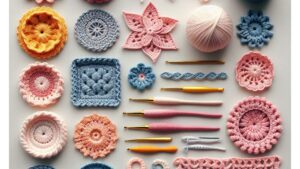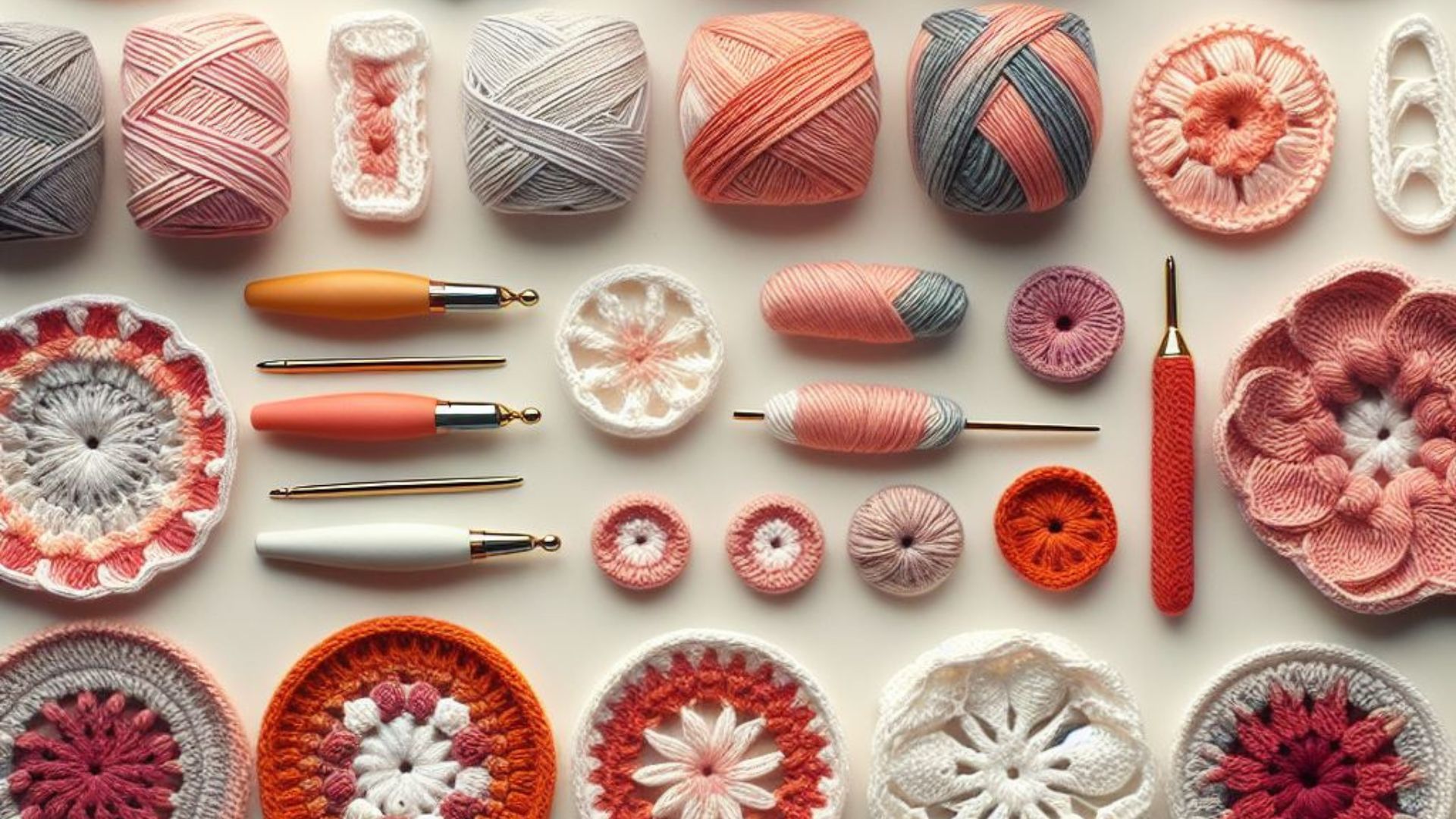Absolutely, different crochet stitches can behave differently, especially when it comes to curling.
Understanding these nuances can greatly impact the outcome of your crochet project.
Let’s dive in
Understanding Crochet Stitch Behavior
Crocheting isn’t just about creating beautiful patterns; it’s also about understanding how different stitches behave. One common issue that crocheters encounter is curling. Whether a piece curls at the edges or retains a flat shape largely depends on the stitches used.
Why Do Crochet Stitches Curl?
The curling tendency primarily relates to the structure and tension of the stitches. Stitches that lean predominantly in one direction or have varying heights can cause the fabric to curl. Here are some stitches that commonly exhibit curling tendencies:
1. Single Crochet (sc):
- Single crochet tends to create a denser fabric, often leading to minimal curling compared to taller stitches.
- However, if worked too tightly or in a pattern with frequent color changes, it might still curl slightly.
2. Double Crochet (dc):
- Double crochet stitches are taller and have more space between them. This openness can cause the fabric to curl.
- When used alone or with other stitches strategically, it might curl less.
3. Half Double Crochet (hdc):
- Half double crochet stitches sit between single and double crochet in height. This middle ground often results in less pronounced curling.
Managing Curling: Tips and Tricks
1. Stitch Combination:
- Pairing stitches strategically can counteract curling. For instance, alternating rows of taller stitches with shorter ones can balance out the tension and reduce curling.

crochet stitches
2. Blocking:
- Blocking your finished piece is a magical solution. Wet blocking or steam blocking can relax the fibers and help reshape the fabric to lay flat.
3. Choosing Yarn:
- Opt for yarns that are less prone to curling. Experiment with different fiber compositions and weights to find the best match for your project.
So,…..: Experimentation and Practice
Understanding how various crochet stitches behave is key to creating projects that lie flat. While some stitches may inherently curl more than others, combining techniques, experimenting with yarn, and practicing different stitch combinations will empower you to manage curling effectively.
Moving forward
Remember, every crochet project is an opportunity to learn and experiment. Embrace the journey, and happy crocheting.
let’s delve deeper into the world of crochet stitches and their tendencies to curl.
Advanced Stitch Analysis
4. Treble Crochet (tr):
- Treble crochet stitches are even taller than double crochet, which means they have more space between them. This height can result in significant curling.
- Using fewer chains between treble crochet stitches or incorporating shorter stitches in the pattern can help mitigate curling.
5. Cluster Stitches:
- Cluster stitches involve multiple loops and can sometimes create a bumpy texture. This texture variation might cause slight curling.
- Balancing cluster stitches with smoother stitches or adding a border can minimize curling effects.
Understanding Stitch Tension
Apart from the type of stitch used, the tension applied while crocheting significantly affects curling. Tight tension tends to accentuate curling, while looser tension can often alleviate it. Experiment with your tension and find a balance that works best for the stitch pattern and yarn you’re using.
Designing for Success
6. Borders and Edging:
- Adding a border or edging to your project can work wonders in preventing curling. A simple single crochet or slip stitch border can help stabilize the edges and keep your piece flat.
7. Combining Techniques:
- Mix stitch patterns strategically. Pairing a curl-prone stitch with a stabilizing stitch in the same row or alternating rows can create a balanced fabric.
Fine-Tuning Your Crochet Skills
Mastering the art of managing curling takes practice and patience. As you progress in your crochet journey, observe how different stitches behave in various patterns and combinations. Don’t be afraid to experiment and adjust your technique to achieve the desired outcome.
External Resources for Further Exploration:
- Crochet Stitch Library
- Mastering Crochet Tension
- Creative Crochet Borders
- Understanding Crochet Tension
- Blocking Techniques for Crochet
- Choosing the Right Yarn for Crochet Projects
Remember, every crocheter encounters curling in their projects at some point. It’s all part of the learning process. With a bit of knowledge, practice, and creativity, you can conquer curling and create stunning, flat crochet pieces.
Comparison tabular
| Crochet Stitch | Curling Tendency | Tips to Manage Curling |
|---|---|---|
| Single Crochet (sc) | Minimal curling | Watch tension; may still curl if too tight or in color changes |
| Double Crochet (dc) | Pronounced curling | Combine with shorter stitches or use strategically |
| Half Double Crochet (hdc) | Moderate curling | Can be balanced with other stitches for reduced curling |
| Treble Crochet (tr) | Significant curling | Reduce chain spaces or mix with shorter stitches in the pattern |
| Cluster Stitches | Potential for slight curling due to texture | Pair with smoother stitches or add a stabilizing border |
Understanding these tendencies can guide your stitch selection and project design. Experimentation and combining stitches strategically can help manage curling and create beautifully flat crochet pieces.
Wrapping up
In the vibrant world of crochet, mastering the behavior of different stitches is key to creating stunning projects. While some stitches might naturally curl more than others, armed with the knowledge shared here, you’re equipped to conquer curling and produce beautifully flat pieces.
Remember, don’t be afraid to experiment with stitch combinations, adjust your tension, or add borders to fine-tune your creations. Embrace the learning process, as each project is a step forward in your crochet journey.
By understanding the nuances of each stitch, employing clever techniques, and drawing inspiration from various resources, you’ll transform curling challenges into opportunities for creativity and skill enhancement.
So, pick up your hook, select your favorite yarn, and embark on your next crochet adventure! Happy crocheting.

For over a decade, I’ve been Mike, an artist, crafter, and designer deeply immersed in the Croc world. I thrive on crafting unique, size-inclusive patterns, fostering creativity, and sharing them on ktforum.com. My designs aim to ignite your creative spark and delight you, ensuring clarity and ease of use through rigorous testing. Join me in expressing your creative flair and showcasing your craft with joy.
Related Posts
- Understanding Why Chain Stitches Curl in Crochet: Tips to Prevent and Fix
Crocheting is a beautiful craft that allows for endless creativity, but encountering issues like curling…
- Some popular crochet stitches for scarves
Crochet stitches offer a vast array of textures and designs that are perfect for scarves.…
- Mastering Stitch Manipulation: How to Increase and Decrease Stitches in Your Knitting or Crochet Projects
Stitch manipulation is a fundamental skill in knitting or crochet, allowing you to shape your…
- Basic Crochet Stitches: A Guide for Beginners
Crocheting opens up a world of creativity and craftsmanship, allowing you to create beautiful pieces…

